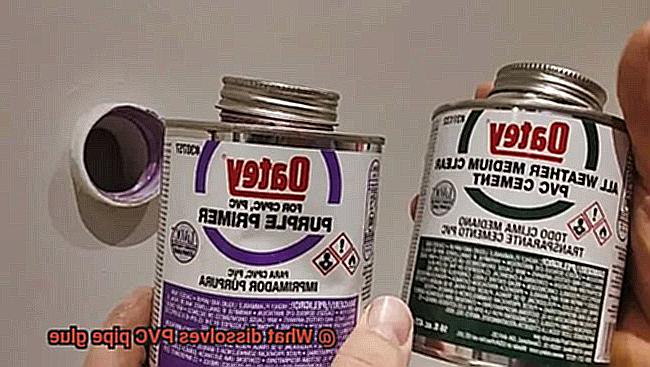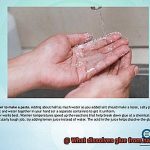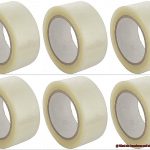Ever found yourself in a sticky situation, desperately trying to dismantle or fix PVC pipes only to be thwarted by the relentless grip of adhesive? We’ve all been there. Whether you’re a DIY fanatic or a seasoned plumber, battling with PVC pipe glue can be an infuriating and time-consuming ordeal.
But fret not. In this captivating blog post, we’ll plunge into the realm of chemical wizardry and out-of-the-box solutions, unveiling the secrets of what dissolves PVC pipe glue. Bid farewell to finger-scraping struggles and say hello to effortless disassembly and repairs.
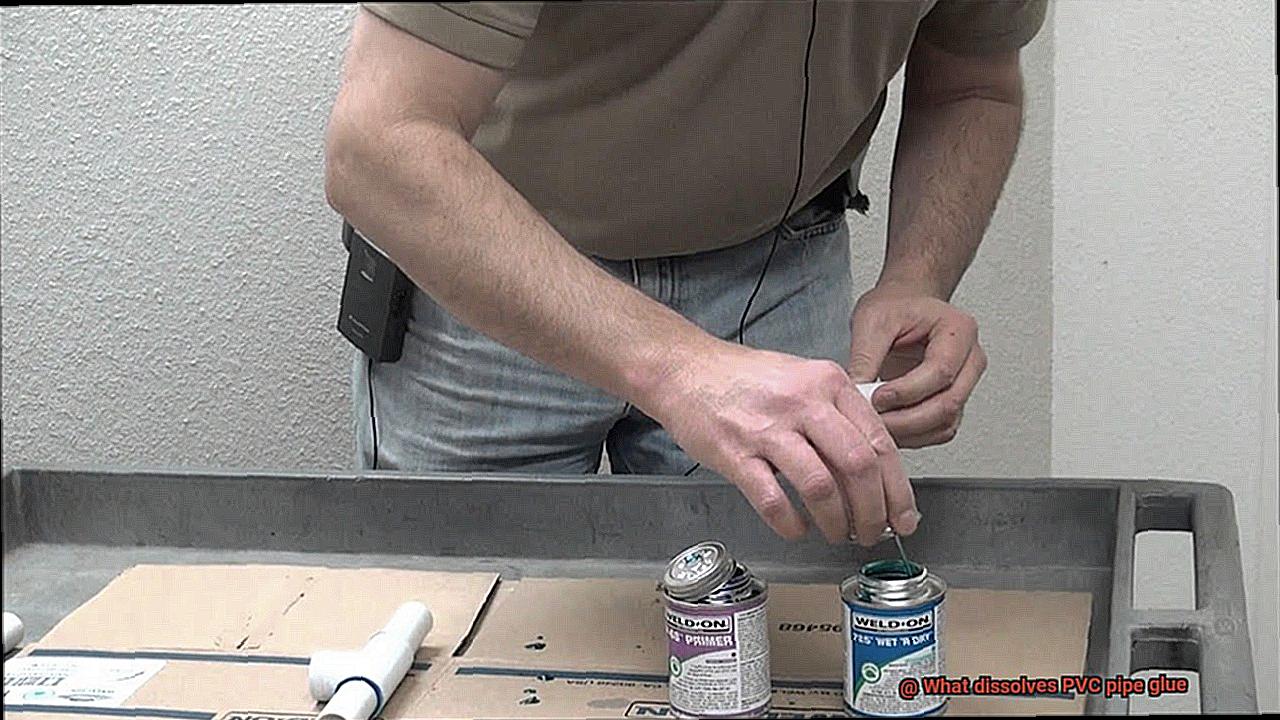
Let’s kick off our journey by addressing the burning question on everyone’s mind: how does PVC pipe glue actually work? Understanding this mystical bond phenomenon will not only quench our curiosity but also set the stage for exploring various strategies to dissolve it.
With your undivided attention, we’ll soon uncover the primary methods employed for dissolving PVC pipe glue. While some may opt for heavy-duty solvents as a quick fix, others crave eco-friendly alternatives that are easily accessible. We’ll explore both options, weighing their pros and cons so that you can make an informed decision based on your needs and preferences.
Furthermore, we’ll dive headfirst into the extraordinary world of DIY concoctions where everyday household items like acetone, citrus solvent, or even boiling water might hold the key to defeating PVC pipe glue once and for all. Brace yourself for jaw-dropping revelations along this wild ride.
Are you ready to become a master of PVC pipe glue dissolution? Buckle up, dear reader, as we embark on this enlightening journey, unraveling the secrets behind breaking the bond and gaining control over stubborn PVC pipe adhesives. Discover the power at your fingertips and never let adhesive triumph over you again.
What is PVC Pipe Glue?
Contents
PVC pipe glue, also known as solvent cement, is the unsung hero of plumbing and construction projects. With its unique composition and bonding process, this adhesive creates unbreakable connections between PVC pipes and fittings. In this article, we will delve into the fascinating world of PVC pipe glue, exploring its composition, application techniques, and even methods for removal.
Unleashing the Solvent Power:
At the heart of PVC pipe glue lies a potent solvent blend, typically containing tetrahydrofuran (THF) or methyl ethyl ketone (MEK). These solvents work in harmony to soften the surface of PVC materials upon application, paving the way for an unbreakable bond.
A Dance of Perfect Bonding:
Applying PVC pipe glue requires precision and adherence to manufacturer instructions. First, prepare the surfaces to be bonded by cleaning them thoroughly. Then, with a steady hand, apply a thin and even coat of glue to both the outside of the pipe and the inside of the fitting. Finally, join them together swiftly but carefully. As the solvents evaporate in a mesmerizing display, they leave behind a solid connection that defies separation.
Dissolving the Stronghold:
While PVC pipe glue creates formidable bonds, there may come a time when its grip needs to be released. Fear not. Here are some methods to dissolve its hold:
- Adhesive Removers: Seek out adhesive removers specifically formulated for PVC pipe glue. These magical potions break down the chemical bonds within the glue, making removal a breeze. Available in liquid or gel form, these solutions can be found at hardware stores or ordered online.
- Heat Application: Harnessing the power of heat can loosen PVC pipe glue’s hold. By directing a heat gun or high-temperature hairdryer at the glued area, the solvents evaporate, allowing for easy removal. Caution must be exercised to avoid damaging the PVC material itself.
- Mechanical Methods: In certain cases, brute force may be necessary. Employ tools like scrapers or sandpaper to physically scrape away the glue from the PVC surface. Care must be taken to preserve the integrity of the PVC material during this process.
Composition of PVC Pipe Glue
Today, we embark on an exciting journey into the mysterious realm of PVC pipe glue. This unsung hero of the plumbing and construction world holds the power to create unbreakable connections between pipes and fittings. So, don your safety goggles and join me as we delve into the captivating composition of PVC pipe glue and explore its crucial role in building strong and durable bonds.
Solvent: The Mighty Dissolver
At the heart of PVC pipe glue lies a mighty solvent, such as methyl ethyl ketone (MEK) or tetrahydrofuran (THF). These solvents possess a magical ability to dissolve PVC material, paving the way for a seamless union between two surfaces. As the glue dries, it leaves behind a robust bond that can withstand the test of time.
Enhancers: Boosting Performance
But wait, there’s more to PVC pipe glue than meets the eye. It is fortified with an array of additives that elevate its performance to new heights. Let’s take a closer look at these remarkable enhancements:
a) Stabilizers: The Guardians of Integrity
Stabilizers stand as loyal guardians within PVC pipe glue. They shield the adhesive from degradation caused by heat, UV radiation, and other environmental factors. With these mighty protectors in place, your bond’s strength and integrity will remain unrivaled for years to come.
b) Plasticizers: Flexibility at Its Finest
To ensure resilience in the face of extreme temperatures or stress, PVC pipe glue incorporates plasticizers. These clever additives enhance flexibility and durability, allowing your pipes and fittings to expand or contract without jeopardizing their unyielding connection.
c) Fillers: Filling Gaps with Perfection
Imagine joining two uneven surfaces effortlessly. Enter fillers, the unsung heroes of PVC pipe glue. These magical additives increase the viscosity of the adhesive, ensuring it spreads evenly across the surfaces being bonded. By seamlessly filling gaps, they contribute to creating a robust and reliable joint.
Variations: A Dash of Uniqueness
While the composition of PVC pipe glue remains fairly consistent across brands, slight variations may exist to enhance performance. Different manufacturers might add their secret touch to elevate the adhesive’s capabilities. However, the core components remain the same – powerful solvents and performance-boosting additives.
Solvents Used in PVC Pipe Glue
Today, we shall unlock the secrets behind the extraordinary solvents that bestow upon us the power to forge unbreakable connections in the world of plumbing and construction.
Imagine this: you stand poised with your trusty PVC pipe glue, ready to conquer your latest project. But have you ever wondered about the mystical forces that make this adhesive so potent in joining pipes and fittings? Let me unveil the answer – it lies within the mighty solvents specially crafted for this very purpose.
Leading our entourage is the formidable tetrahydrofuran, affectionately known as THF. This transparent elixir, with its sweet aroma, possesses an unrivaled ability to dissolve PVC. Its solvency prowess makes it the go-to choice for countless PVC pipe glues, ensuring a bond of unparalleled strength that defies the ravages of time.
Next in line is our stalwart companion, methyl ethyl ketone, or MEK for those in the know. This colorless liquid, exuding a robust fragrance, fearlessly takes on PVC surfaces. With its exceptional solvency properties, MEK effortlessly dissolves PVC, paving the way for seamless unions between pipes and fittings.
But let us not overlook our trusted comrade, acetone. This volatile liquid, renowned for its distinctive scent and familiar association with nail polish remover, proves itself a force to be reckoned with when it comes to dissolving PVC pipe glue. Its accessibility makes it a convenient choice for intrepid DIY enthusiasts venturing into uncharted territories.
Ah, but what about the enigmatic realm of specialty PVC pipe glues? Here lies a domain where solvents like cyclohexanone or toluene may dance in harmony with their PVC counterparts. Though less frequently employed, these solvents possess their own brand of magic, effortlessly dissolving PVC and weaving bonds of formidable strength.
It is worth noting that different PVC pipe glue brands may employ varying solvents in their formulations. Thus, it is imperative to consult the product label to ensure the correct adhesive for your noble quest.
Adhesive Remover for PVC Pipe Glue
In the realm of plumbing and construction, PVC pipe glue is a trusted ally for creating strong bonds. But what happens when you need to bid farewell to that adhesive? Fear not, my friends. Today, we embark on a journey through the realm of adhesive removers for PVC pipe glue, revealing the secrets to safely and effectively removing those stubborn residues. So, don your gloves and prepare to be amazed.
The Mighty Acetone:
First on our list is the powerhouse known as acetone. This potent solvent possesses the unrivaled ability to dissolve PVC pipe glue with ease. But beware: acetone is a volatile and flammable substance, demanding utmost caution in its usage. Proper ventilation and handling are non-negotiable when harnessing this mighty adhesive remover.
Specialized PVC Pipe Adhesive Removers:
For those who prefer a safer alternative, fear not. Specialized adhesive removers tailored specifically for PVC pipe glue exist. These products can be conveniently found at hardware stores and have been intricately formulated to dissolve the adhesive without inflicting harm upon the precious PVC material.
Cleanliness Is Paramount:
Before embarking on your adhesive removal endeavor, ensure that the area surrounding the glued surface is immaculate. Eliminating any dirt or debris primes the stage for unhindered efficacy of the remover.
Patience Rewarded:
Once you’ve applied the adhesive remover, a moment of patience is required. Allow time for it to weave its magic. Each product has its own unique waiting period, so perusing and adhering to the instructions provided is vital. Remember: Rome wasn’t built in a day, and neither is the removal of stubborn PVC pipe glue.
Scraping Away with Satisfaction:
As the adhesive dissolves to your satisfaction, it’s time for a gratifying removal extravaganza. Equip yourself with a clean cloth or sponge and gently scrape or wipe away the remnants of the glue. For those particularly tenacious patches, do not despair; repeating the process may be necessary. Trust me, the end result will be worth the effort.
Dissolving PVC Pipe Glue with Heat
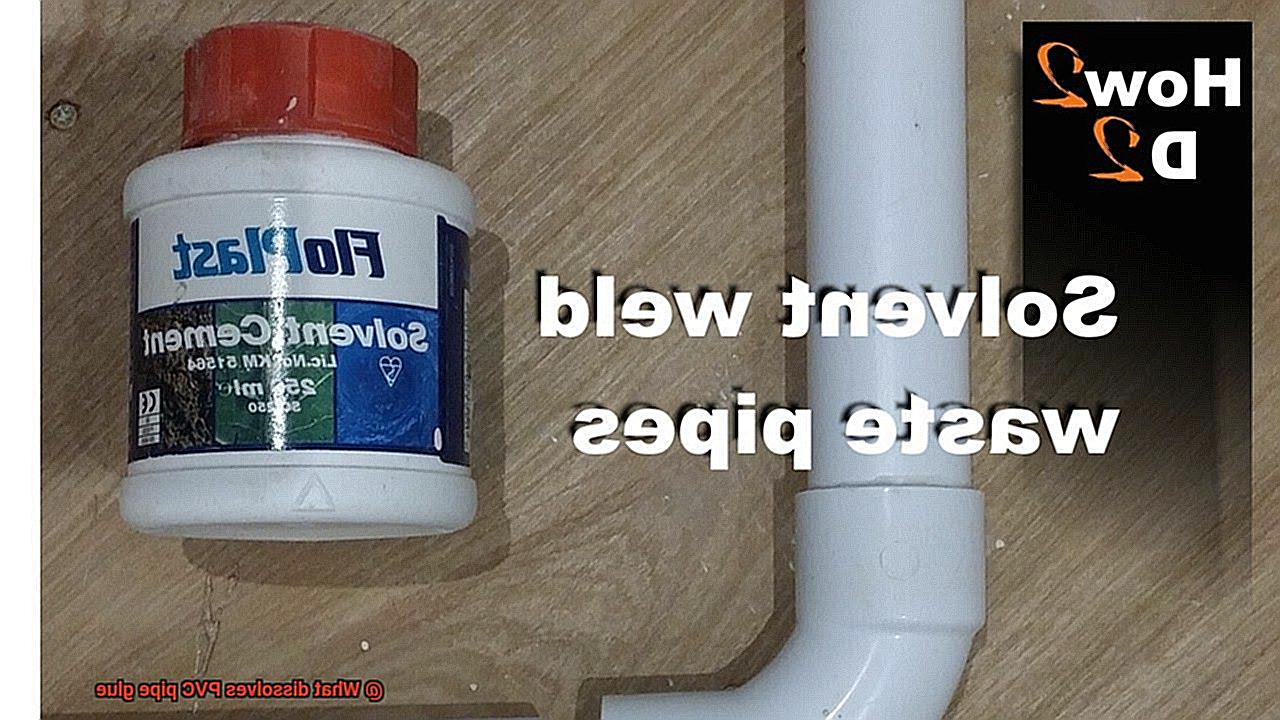
If you’ve ever found yourself battling stubborn adhesive residues, this method is about to become your new best friend. So, grab your trusty heat gun and let’s dive into this fascinating process.
Before we get into the nitty-gritty, let’s understand why heat is such a potent weapon against PVC pipe glue. You see, this type of glue is crafted with solvents designed to dissolve and bond PVC pipes together. When we apply heat to the equation, it breaks down those adhesive properties, making removal a breeze. It’s like magic.
Now, let’s talk tools. The star of our show is the mighty heat gun. This handheld device blows hot air, allowing us to direct intense heat onto the glued area of the pipe. But hold on tight. We need to exercise caution here because too much heat can cause damage to the delicate PVC pipe.
Here’s your step-by-step guide on becoming a pro at dissolving PVC pipe glue with a heat gun:
- Start by applying gentle heat to the glued area of the pipe. We want to ease into it and avoid any potential pipe disasters.
- If needed, gradually increase the temperature. Remember, patience is key in this game. Slow and steady wins the battle.
- As you apply heat, witness the magic as the glue starts to soften before your eyes. This is a promising sign. Softened glue means easy removal.
- Once the glue reaches its melting point and softens up nicely, it’s time for some satisfying scraping action. Grab a trusty putty knife or a similar tool and scrape away that softened glue.
- To prevent any re-adhesion mishaps, keep a container of water nearby. Dip your scraping tool in the water to cool down the glue and eliminate any sticky situations.
In some cases, you might need to unleash the heat gun multiple times to fully dissolve the glue. Don’t worry, my friend. Persistence is key in this battle against stubborn residues.
And there you have it. A simple and effective method to dissolve PVC pipe glue using the power of heat. Just remember to handle your heat gun with caution and take it slow. Our goal is to remove the glue, not create a plumbing disaster.
Mechanical Methods for Removing PVC Pipe Glue
In this comprehensive guide, we will delve into the captivating world of mechanical methods for removing PVC pipe glue. Get ready to unleash your inner DIY pro and bid farewell to those adhesive remnants once and for all. So, don your safety gear and prepare to embark on a journey through the realm of PVC pipe glue removal.
Scrape It Off: The Art of Precision
When faced with smaller amounts of glue or thin layers, nothing beats the trusty scraper or putty knife. With meticulous precision, gently scrape off the hardened glue from the pipe surface, all while ensuring not to damage the PVC material. Remember, slow and steady wins the race in this delicate dance of glue removal.
Sand It Smooth: The Magic of Friction
For those stubborn, thick globs of PVC pipe glue, sanding is a formidable technique that can restore the smoothness you desire. Armed with coarse grit sandpaper and a sanding block, let the power of friction work its magic. Begin with a coarse grit sandpaper and gradually progress to finer grits, unveiling a flawless finish on your PVC pipes.
Embrace the Heat: The Gentle Softener
Prepare to be mesmerized by the transformative powers of heat in glue removal. Grab hold of a heat gun or hairdryer and apply gentle warmth to the glued area. Watch as the adhesive softens, making it easier to scrape off or peel away. However, tread cautiously. Excessive heat has the potential to cause PVC pipes to warp or deform, so moderation is key in this heated endeavor.
Solvent Assistance: A Helping Hand
Sometimes, a little assistance from solvents or adhesive removers can elevate your PVC pipe glue removal journey. Apply a safe solvent onto the glue, allowing it to penetrate and soften the adhesive before embarking on mechanical removal. But beware, choose solvents specifically designed for use on PVC pipes to avoid any undesired damage.
Prevention is Better Than Cure When Working with PVC Pipes and Fittings
Embarking on a DIY project involving PVC pipes and fittings can be a rewarding endeavor. However, it’s crucial to understand that prevention is always better than cure. By taking a few precautionary steps, you can avoid the hassle of dealing with the aftermath of failed connections and the need to dissolve stubborn PVC pipe glue.
In this article, we will delve into the reasons why prevention is paramount when working with PVC pipes and fittings. We will also provide practical tips to help you achieve success in your projects.
Proper Preparation:
The foundation of a strong bond lies in proper preparation. Before applying PVC pipe glue, it’s essential to ensure that the surfaces to be bonded are meticulously clean. Rid them of any dirt, grease, or debris using a mild detergent solution or specialized PVC cleaner. This step guarantees a sound connection and eliminates the risk of weak joints.
Selecting the Right Glue:
Choosing the correct type of PVC pipe glue is critical for success. With various glues available, each tailored to specific purposes and pipe sizes, it’s crucial to select the appropriate one. Utilizing the wrong glue can lead to subpar bonds or complete failure. Take the time to research and choose wisely to ensure a secure connection.
Follow Manufacturer’s Instructions:
The manufacturer’s instructions are your roadmap to success when applying PVC pipe glue. These guidelines provide valuable insights into the optimal amount of glue needed and the required curing time for a robust bond.
Deviating from these instructions by using too much or too little glue can compromise the integrity of the connection. Thus, attentively following instructions is key.
Handle with Care:
Treating PVC pipes and fittings with care during installation is essential for long-lasting connections. Avoid any mishandling or accidental drops that may weaken joints, leading to leaks or future failures. By handling these materials gently, you ensure the longevity of your connections.
Minimize Stress on Joints:
Excessive stress on joints can be detrimental to the stability of PVC pipes and fittings. During installation, avoid unnecessary bending or twisting that could cause the glue to crack and weaken over time. Properly supporting and aligning pipes and fittings will minimize stress on the joints, ensuring a durable connection that withstands the test of time.
LyQww5f8EWA” >
Conclusion
In conclusion, the realm of PVC pipe glue dissolution is a captivating one, brimming with chemical sorcery and ingenious remedies. Whether you’re a DIY aficionado or a seasoned plumber, grappling with stubborn adhesive can be an exasperating ordeal. But despair not. Armed with the knowledge of what dissolves PVC pipe glue, you can bid farewell to finger-scraping struggles and greet effortless disassembly and repairs.
We delved into a myriad of methods for dissolving PVC pipe glue, assessing the advantages and disadvantages of each approach. From potent solvents to environmentally friendly alternatives like acetone, citrus solvent, or even scalding water, there are choices to cater to every requirement and preference.
Comprehending how PVC pipe glue operates is vital in uncovering effective solutions for its eradication. The adhesive’s composition comprises potent solvents such as tetrahydrofuran (THF) or methyl ethyl ketone (MEK), which tenderize the surface of PVC materials to forge indissoluble bonds.
Furthermore, we expounded on the significance of proper preparation when working with PVC pipes and fittings. Taking precautionary measures such as meticulous surface cleaning, selecting the appropriate glue, adhering to manufacturer instructions, handling materials with utmost care, and minimizing stress on joints can obviate the need for glue removal altogether.
So embrace the power that lies within your grasp and never let adhesive triumph over you again. Equipped with these insights into what dissolves PVC pipe glue, you are well-prepared to confront any sticky predicament that comes your way.

